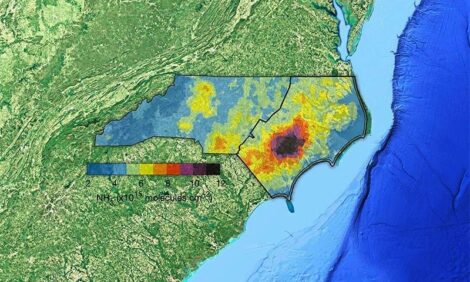



UK/EU Market Update - June 2003
By the UK's Meat and Livestock Commission - This MLC report looks at the current market situation in the UK and reviews recent price trends and markets throughout Europe.Producer Prices

United Kingdom producer prices since the beginning of the year have benefited from a combination of declining throughputs at abattoirs and from the weaker sterling exchange rate relative to the Euro. In the first three months of 2003 the average price increased by 17p/kg, reaching 109p at the end of March. Although prices slipped back during April, they strengthened again in May and June. The average pig price in the week ended 21 June was 113p/kg dw, 22p more than at the beginning of the year and the highest since August 1997
Sterling continued to weaken in April and May, rising through the 70p barrier. By the end of May the value of the Euro stood at 72.3p, 1.5p above the value at its launch in January 1999 and 9p higher than a year ago. However, sterling fell back to under 70p during the course of June. This will have led to some reduction in import prices in sterling terms, and there are some indications of an impact on UK prices. The growth in average UK pig prices has flattened out during June, while some major pig abattoirs have reduced their contract prices.

Acute shortages of weaner supplies, resulting from breeding herd contraction and recent problems with sow infertility, mean that prices have strengthened considerably during 2003. The average price of 30kg weaners fell back slightly in late June but, at £38.50 a head, it was still £11 more than at the end of 2002.
Reduced supplies and, in particular, the impact of the weaker sterling have also led to generally firm cull sow prices. Sow prices averaged around 55p/kg dw in April and the first half of May, but they fell back 3-4p in the second half of 17 May amid reports of Germany being swamped with cull sows from Poland. Germany is reported to have remained a difficult market in June although sow prices improved slightly, in spite of the strengthening of sterling, as there was some decline in sow marketings.

EU prices in Euro terms moved slightly higher in June, offsetting the declines in May. The average EU reference price in the week ended 22 June was six per cent higher than a month earlier in Euro terms. The Euro has appreciated strongly against the US dollar over the past year (up around 30 per cent in the year to May), which has created difficult export market conditions. However, there was some weakening of the Euro against the dollar in June.
The UK price premium over the overall EU price averaged about 22p/kg in June. This compares with an average of 9p in 2002. The difference in prices compared with Denmark and the Netherlands, the main overseas suppliers to the UK market, is even more marked. Prices in Denmark, where the market has been affected by a sharp drop in export sales to Russia following the introduction of a Tariff Rate Quota in April, are currently 38p lower than the UK price while Dutch prices are 29p lower.
Slaughterings
Clean pig slaughter levels have been well below corresponding 2002 levels since January. This has arisen in part from a lower breeding herd but more importantly from deteriorating sow productivity. Defra slaughtering statistics for May indicate that UK throughputs averaged around 165,000 head. Preliminary MLC estimates for June are that average weekly throughput was 175,000 head. This apparent increase occurred because there were two public holidays in May, and UK slaughterings remain at historically low levels. However there was some reduction in the annual rate of decline in June, as June 2002 slaughter levels were particularly low.

Total United Kingdom slaughterings have fallen less markedly than GB slaughterings. This is because of an increase in Northern Ireland, where the breeding herd has been more stable than in Great Britain. Northern Ireland slaughterings have also benefited from some increase in live pig imports from the Irish Republic.

The actual cause of the decline in supplies in Great Britain since the start of the year is unclear. There may well be no single predominant reason, but a number of factors, including:
- Reports of some sporadic increases in PMWS incidence in the last couple of months.
- Some disruptions to breeding patterns and performance arising from a significant number of producers depopulating and then repopulating last year.
- A developing sow infertility problem since last Autumn, which is now beginning to affect clean pig slaughter levels. But, whatever the precise cause, the impact on apparent sow productivity (measured by pigs finished per sow per year) has been dramatic, as the following graph shows.

Consumption
Household fresh and frozen pork volume purchases were down one per cent in the 12-week period ending 25 May compared with a year ago. However the value of retail expenditure was up four per cent due to higher retail prices. Bacon volume sales were also down one per cent in the 12-week period, while expenditure was up just one per cent. There continues to be growth in overall consumption of processed pig meat products. Sales volumes of frozen pork products increased by 25 per cent and pork sausages by 12 per cent. Ham sales were up by just one per cent, a smaller increase than seen earlier in the year.

Source: MLC - June 2003







